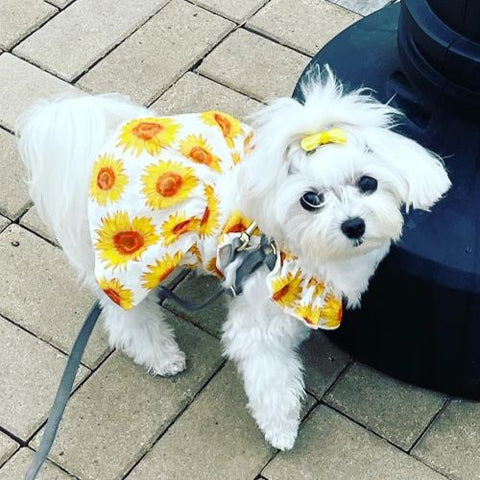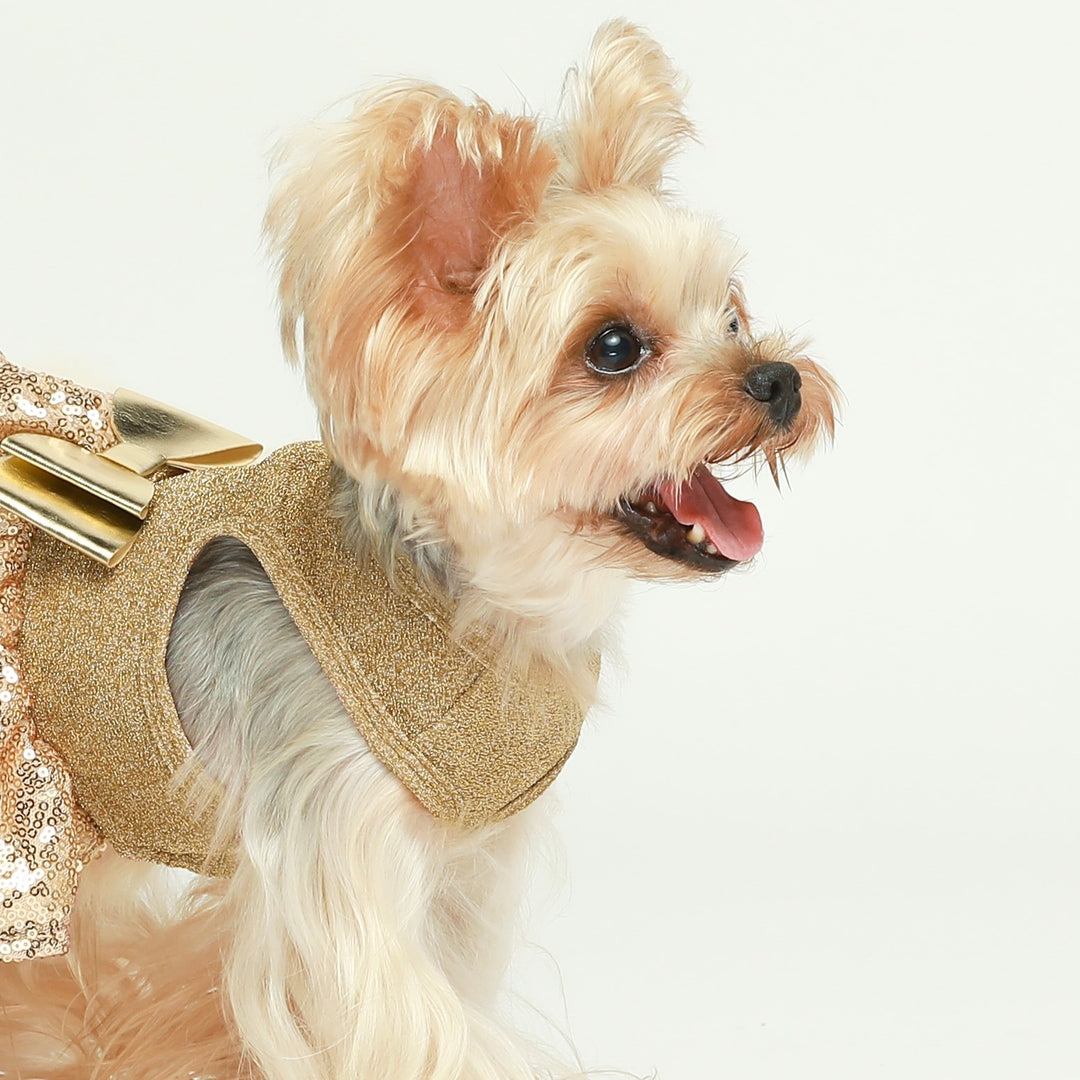Sniffle-Free Spring: A Dog Owner's Guide to Conquering Allergies
As spring gets closer, we start to see more sunshine, flowers, and greenery. But this time of year can also mean allergies for our dogs. Pollen, mold, and dust can make them itchy and uncomfortable. It's important to get your dog ready for these allergies so they can have fun in spring just like us. Here’s what you can do to help your dog deal with allergies during spring, keeping them feeling good.

Instagram: cavapruechon
Understanding Spring Allergies in Dogs
Dogs can get seasonal allergies too, just like people. The symptom called Canine Atopic Dermatitis, happens when a dog's immune system reacts too much to things around them. Springtime can be tough because of all the tree and grass pollen, mold, and even fleas that like the warm weather. But unlike humans who might get a stuffy nose or sneeze, dogs usually have skin problems when they're dealing with allergies. manifest when a dog’s immune system overreacts to environmental allergens. These allergens, predominantly present during spring, include tree pollen, grass pollen, mold spores, and even fleas that become more active in warmer temperatures. Unlike humans who experience respiratory symptoms, dogs typically show signs of allergies through their skin.
Signs of Spring Allergies in Dogs
As spring rolls in, so do the allergies that can make your dog's life a bit uncomfortable. Knowing what symptoms to look out for is crucial in getting ahead of any allergic reactions. Here’s a closer look at the common signs your dog might display if they're experiencing seasonal allergies:
-
Excessive Scratching or Licking: One of the most noticeable signs is if your dog starts scratching more than usual or licking specific areas relentlessly. This behavior can indicate that something is irritating their skin.
-
Red, Inflamed Skin: Upon closer inspection, you might find areas of redness or inflammation on your dog's skin, especially around the paws, belly, and ears. These spots can be tender to the touch and indicate allergic reactions.
 Instagram: ms.mochie
Instagram: ms.mochie
-
Sneezing and Runny Nose: Just like humans, dogs can have respiratory symptoms from allergies. Frequent sneezing and a clear discharge from the nose are tell-tale signs that your dog might be reacting to airborne allergens.If you want to know how to clean your dog’s runny nose, read this blog post from us.
-
Watery Eyes: Allergies can also cause your dog's eyes to water more than usual, leading to tear stains on their fur. This can be uncomfortable for them and is a sign that allergens are affecting their eyes.
-
Ear Infections: Dogs with allergies are more prone to developing ear infections. If your dog is shaking their head frequently or pawing at their ears, it might be time to check for an infection, which can be a secondary symptom of allergies.
 Instagram: iggychelseaandme
Instagram: iggychelseaandme
Being proactive in spotting these symptoms can make a significant difference in managing your dog's comfort during allergy season. Early detection means you can start taking steps to alleviate their discomfort sooner, preventing the symptoms from worsening. Remember, if you're ever unsure about your dog's health or if the symptoms persist despite your efforts, it's best to consult with a veterinarian for professional advice and treatment options.
Proactive Measures for Your Dog's Spring Allergies
Taking proactive steps can significantly alleviate the discomfort your dog may experience from spring allergies. Here’s how you can help:
-
Regular Grooming: Bathing your dog regularly during allergy season can wash away the day's collection of allergens from their fur and skin. Opt for a gentle, hypoallergenic shampoo that won't irritate their skin further. Additionally, increasing the frequency of brushing helps to not only distribute natural skin oils but also remove pollen, dust, and dander that can accumulate in their coat.
-
Clean Environment: An allergen-reduced environment can make a big difference in managing your dog's allergies. Regular vacuuming of floors and furniture, especially in areas where your dog spends a lot of time, can capture and remove allergens. Air purifiers with HEPA filters can also clean the air of pollen and mold spores. Don’t forget to wash your dog’s bedding, toys, and any fabric covers in hot water weekly to kill dust mites and remove accumulated allergens.
 Instagram: rockynycmorkie
Instagram: rockynycmorkie
-
Dietary Support: Boosting your dog's diet with omega-3 fatty acids, found in fish oil, can support skin health and reduce inflammatory responses to allergens. A well-balanced diet rich in vitamins and minerals supports the overall immune system, making your dog less susceptible to allergies. Consult with your vet for recommendations on supplements and dietary changes that might benefit your dog.
-
Vet Visits: An early spring veterinary check-up can prepare your dog for allergy season. Your vet can provide personalized advice based on your dog’s health history and current condition. You also can ask them to recommend or prescribe medications to help control allergy symptoms.
 Instagram: baileythequarendoggo
Instagram: baileythequarendoggo-
Allergy Testing: For dogs with persistent or severe allergy symptoms, allergy testing can be a valuable tool. This can be done through blood tests or intradermal skin testing. Identifying the specific allergens allows for targeted management strategies, such as avoidance, immunotherapy (allergy shots), or specific dietary adjustments.
-
Protective Clothing: Dressing your dog in protective clothing, like lightweight dog shirts or bodysuits, can provide a barrier between their skin and environmental allergens. These garments can help minimize contact with irritants during walks or outdoor play. Choose breathable fabrics to ensure your dog remains comfortable and doesn’t overheat.
 Instagram: macandmillie0622
Instagram: macandmillie0622
Enjoy the Season Together
As the season of blossoms and new beginnings unfolds, it's essential to ensure that your dog can share in the springtime splendor without the burden of allergies. Taking proactive steps to address seasonal allergies not only enhances your dog's comfort but also enriches your shared experiences of this vibrant time of year. Early and consistent attention to your dog's allergy symptoms plays a crucial role in fostering their well-being, allowing both of you to relish the joys of spring together.

Instagram: daisytheyorkie2020
To wrap up, effectively preparing your dog for the challenges of spring allergies requires a mindful blend of observation, preventive measures, and, when necessary, professional veterinary care. By adopting a thoughtful and informed approach to your dog's health, you pave the way for a season filled with happiness and health, ensuring that spring remains a time of enjoyment for you and your beloved pet.














